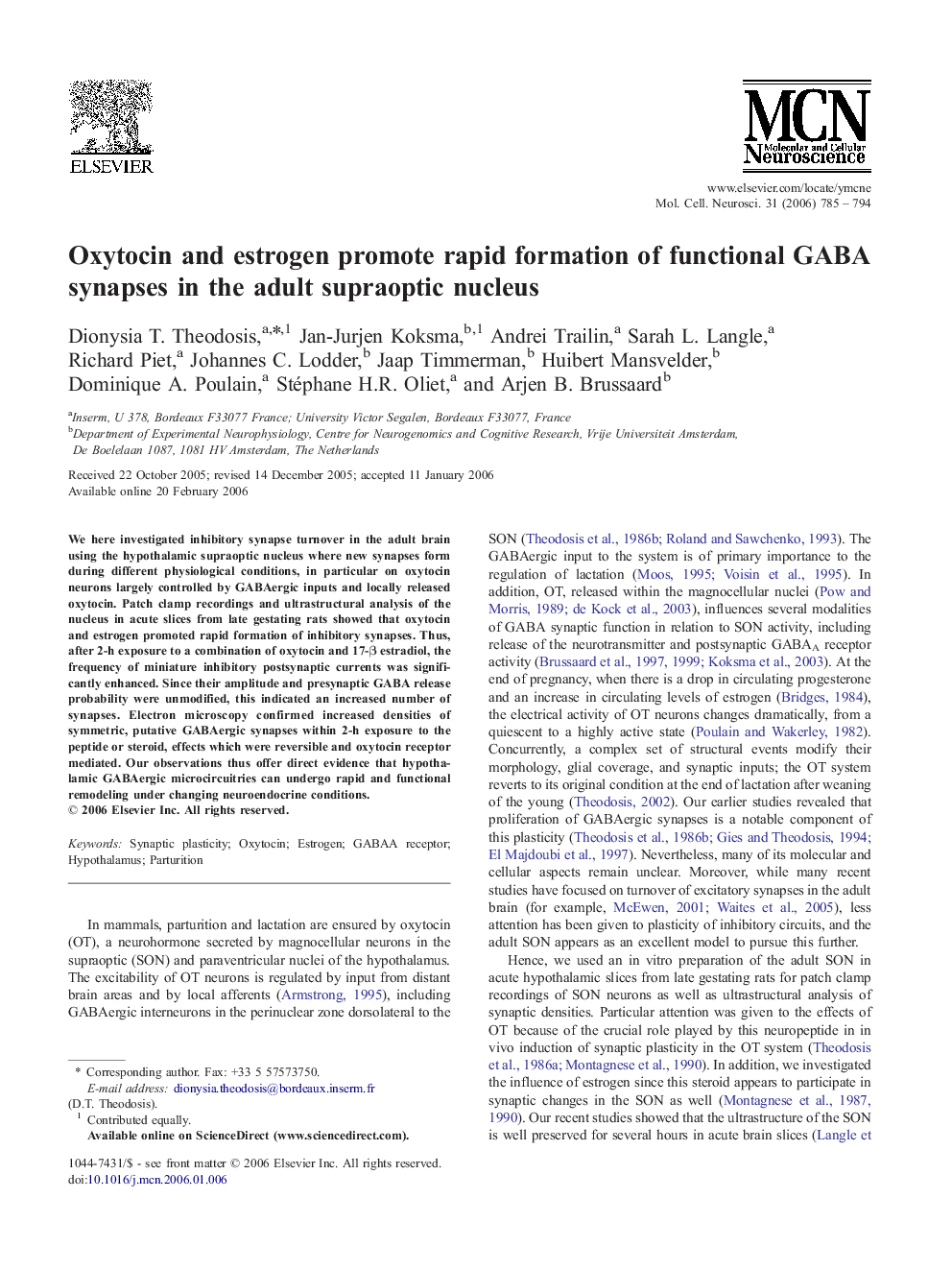| Article ID | Journal | Published Year | Pages | File Type |
|---|---|---|---|---|
| 2199496 | Molecular and Cellular Neuroscience | 2006 | 10 Pages |
We here investigated inhibitory synapse turnover in the adult brain using the hypothalamic supraoptic nucleus where new synapses form during different physiological conditions, in particular on oxytocin neurons largely controlled by GABAergic inputs and locally released oxytocin. Patch clamp recordings and ultrastructural analysis of the nucleus in acute slices from late gestating rats showed that oxytocin and estrogen promoted rapid formation of inhibitory synapses. Thus, after 2-h exposure to a combination of oxytocin and 17-β estradiol, the frequency of miniature inhibitory postsynaptic currents was significantly enhanced. Since their amplitude and presynaptic GABA release probability were unmodified, this indicated an increased number of synapses. Electron microscopy confirmed increased densities of symmetric, putative GABAergic synapses within 2-h exposure to the peptide or steroid, effects which were reversible and oxytocin receptor mediated. Our observations thus offer direct evidence that hypothalamic GABAergic microcircuitries can undergo rapid and functional remodeling under changing neuroendocrine conditions.
